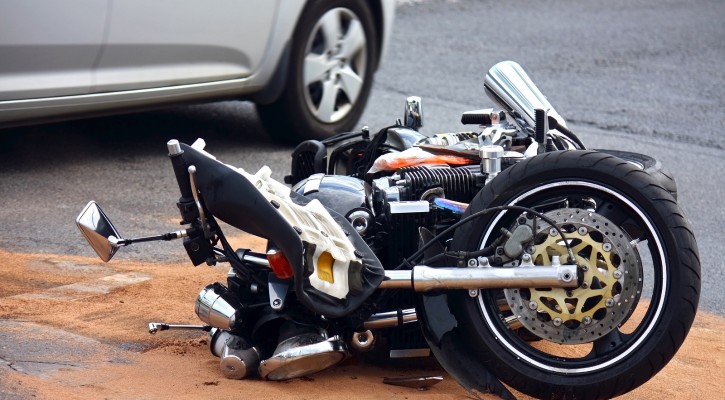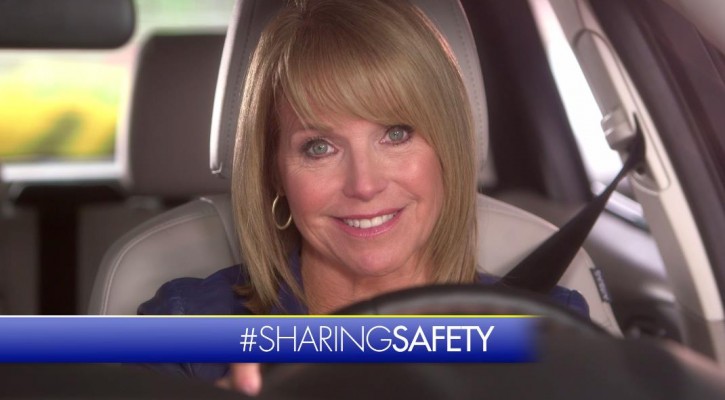
Florida Leads Nation In Motorcycle Deaths
March 4, 2016
The National Highway Transportation Safety Administration (NHTSA) has compiled data on motorcycle deaths for 2013 and, for the nation overall, the data looks somewhat promising but for Florida, the news isn’t good at all.
Nationwide, there were 4,668 motorcycle deaths reported in 2013, a drop of six percent over the 4,986 killed the year before. The 88,000 motorcycle injuries also reflected a five percent drop over 2012.
In compiling the data, the NHTSA researchers found that:
- Twenty-five percent of motorcycle riders involved in fatal crashes in 2013 were riding their vehicles without valid motorcycle licenses.
- In 2013, motorcycle riders involved in fatal crashes were found to have the highest percentage of alcohol-impaired drivers than any other vehicle type (27% for motorcycles, 23% for passenger cars, 21% for light trucks, and 2% for large trucks).
- Forty percent of motorcycle riders who died in single-vehicle crashes in 2013 were alcohol-impaired.
- Motorcycle riders killed in traffic crashes at night were almost four times more frequently alcohol-impaired than those killed during the day.
- In States without universal helmet laws, 59 percent of motorcyclists killed in 2013 were not wearing helmets, as compared to 8 percent in States with universal helmet laws.
In spite of the fact that California and Texas have greater populations and the number of registered motorcycles in California beats Florida by 33 percent, Florida had the highest motorcycle death rate in the nation in 2013. With a smaller population and fewer registered motorcycles, how could Florida have so many more motorcycle deaths?
Helmet use
California has a mandatory helmet law but Florida doesn’t. In Florida, a motorcycle rider over the age of 21 with $10,000 worth of liability insurance doesn’t have to wear a helmet. Texas has a law similar to Florida’s. NHTSA estimates that helmets saved 1,630 motorcyclists’ lives in 2013, and that 715 more could have been saved if all motorcyclists had worn helmets.
Alcohol use
In Florida, 34 percent of all motorcyclists killed in crashes had a BAC of .01 or higher, meaning they were impaired at the time of their death and 29 percent were legally drunk with a BAC level of .08 or higher.
|
States by Population |
Registered Motorcycles * |
Mandatory Helmet Law |
Helmet Use Percent |
.08 BAC |
Motorcycle Deaths |
|
California |
801,803 |
Yes |
90% |
24% |
435 |
|
Texas |
438,551 |
No |
38% |
37% |
457 |
|
Florida |
574,176 |
No |
49% |
29% |
467 |
*According to Motorcycle Roads.com
Motorcyclists are already a lot more vulnerable to death and injury than those who are protected by the structure of the typical motor vehicle. Smart motorcyclists are trained on how to ride safely and know to ride sober and with all the protective gear available.
For more information, visit: NHTSA 2013 Traffic Safety Facts – Motorcycles

Some Teen Safe Driving Choices Are Still Dangerous
December 17, 2015
Researchers at the Children’s Hospital of Philadelphia recently conducted a study to gauge teen attitudes on safe driving choices regarding cell phones. The researchers saw some encouraging signs but say there’s still a long way to go before cell phone use by teens while driving is a thing of the past.
To conduct their research, the researchers conducted several focus groups with 16 to 18 year old drivers. The questions asked of the teen drivers were designed to get an overall view of teen perceptions regarding cell phone use while driving with the intent of gathering information to help develop future interventions to reduce risky driving choices by teens.
According to the head researcher, Catherine McDonald, PhD, RN, it was encouraging to see that teens recognized that cell phone use, texting, and use of social media are dangerous behind-the-wheel. When asked what methods teens used to prevent the use of cell phones while driving, some teens listed methods such as turning off the cell phone or pulling off the road before making or answering a call. However, some teens listed choices such as waiting for a red light or until they were on familiar roads before diverting their attention to the cell phone.
While it’s good that they are considering ways to reduce their cell phone use, those choices such as waiting for red lights or familiar roads are still dangerous choices that take their eyes and mental attention off the road.
- Choosing to use hands-free communication devices has been shown to be no safer than the use of hand-held devices.
- A driver’s attention at red lights is important too. Not noticing that the light has turned green can hold up traffic behind and lead angry drivers to try to retaliate.
- Research shows that hands-free devices are still distracting for up to 27 seconds after hanging up.
- Waiting for familiar roads is a bad choice because most traffic collisions happen within 25 miles of home and at speeds below 45 mph. Drivers become complacent on those familiar roads and that leads to even more distractions.
According to the researchers, until more effective methods are developed to pry teens away from their cell phones while driving, parents are still the primary influence in promoting safer choices by teens. Setting a good example and insisting on strict rules for cell phone use while driving, parents can help keep their teens safe on the road.
Parents Don’t Understand The Dangers Of Teen Driving
December 3, 2015
A father’s grief following the death of his 17 year old son in a single car crash led him to write a book and produce a video to warn parents about the dangers of teen driving. The father, Tim Hollister, published his book Not So Fast: Parenting Your Teen Through the Dangers of Driving in 2013 and released the companion video on the ninth anniversary of his son’s death.
Teen drivers die at a disproportionate rate compared to all other age groups. In 2013, 1,691 teen drivers were killed and 177,000 were injured in car crashes. An additional 2,642 passengers, occupants of other vehicles, and pedestrians were killed in crashes involving a teen driver.
We have written articles on the dangers cited by Hollister countless times in this and other blogs but teens keep dying the same way month after month. Despite all the training and testing, teens die;
- Because their brains aren’t yet fully developed, leading them to take greater chances with no regard for the consequences.
- Most often in single vehicle crashes after losing control of their vehicle while speeding or driving distracted.
- While carrying other teen passengers who act as a distraction and whose presence, in some cases, lead the teen driver to show off by disregarding the safe driving rules.
- After drinking or using drugs.
- Because they text and drive with the belief that nothing bad will happen to them.
- Because they fail to wear seat belts.
Maybe, what it will take to get the word out to parents is the advice of a grieving father who knows now what he wishes he had known while his son was still alive.
The most important message is to not rely on driver’s ed, state tests, or common sense to keep your teen alive on the road. Parents must be constantly vigilant and set strict rules for their teen driver if they want them to survive into adulthood.
For more information visit: Not So Fast: Parenting Your Teen Through the Dangers of Driving

Michelin And Katie Kouric Want Your Best Driving Safety Advice
November 16, 2015
Michelin North America and Katie Kouric have teamed up to collect the best driving advice that you were given when you were a new driver. Not only do they want your best piece of advice, they want the story behind it.
Michelin is tying this in with a survey they commissioned that shows what most people knew already; most people think they’re good drivers but feel that most other drivers aren’t so good. What that really means is that most people can recognize bad driving behaviors in others but not in themselves.
Here are the main findings from the survey:
- The majority of drivers are confident in their own driving abilities (81 percent rank themselves highly), but 66 percent have felt unsafe when someone else was at the wheel.
- 3 in 4 (73 percent) have witnessed an accident or experienced a “close call” firsthand (76 percent), and 62 percent have been in an accident that someone else caused.
- 69 percent see other motorists ignoring safe-driving practices daily.
- Not surprisingly, 75 percent of drivers admit to “offering advice from the other seat.”
- The driving advice people receive most frequently includes signaling before changing lanes (75 percent) and staying in the right lane unless you’re passing (68 percent).
The survey also found that most people received their best piece of driving advice from their dad (52%), mom (32%), and driving instructor (27%). That’s great if Dad was truly a good driver and gave good advice. The problem is that too many bad drivers, without realizing it, are passing on their bad driving behaviors to their teens.
Most of the bad driving behaviors teens learn from their parents were learned by observing their parents drive from the time they were toddlers until they started to drive on their own. Those learned behaviors combined with a teen’s natural tendency to take risks, led to the deaths of 1,691 teen drivers in 2013.
Here’s a chance for both teens and their parents to pass on those good bits of driving wisdom and hopefully, through the story behind the advice, help others to be safer on the road.
Read more: Katie Couric, Michelin Encourage Drivers to Share Best Advice on Safe Driving

“5 to Drive” Rules To Keep Teen Drivers Safe
October 23, 2015
It’s Teen Driver Safety Week and this year’s theme is “5 to Drive”, referring to five things teen drivers need to be aware of when they drive. The five things are practices by teens that are the most common cause of teen crashes or that increase the chances of greater injury or death in a crash. The five rules that teens must obey if they want to live through a trip on the road are:
- No alcohol
- No cell phone use while driving
- No driving or riding without wearing a seat belt.
- No speeding.
- No extra passengers.
We’ve written about most of these before in a column on the most common type of teen crash. The only thing not covered in that column was the extent to which alcohol and other drugs contribute to teen crashes.
While alcohol use by teens has gone down significantly over the past few years, it still plays a big role in teen crashes. Of all the teen drivers (ages 15-20) killed in 2013, 29 percent had a BAC level of .01 or higher. Among those killed with measurable amounts of alcohol in their system, 82 percent had a BAC level of .08 or higher. More and more research studies show that other drugs along with alcohol are also showing up among drivers involved in crashes.
Cell phones, whether they’re being used for phone calls, texting, or social networking, present a significant danger to drivers of all ages but are especially dangerous for inexperienced teen drivers. Studies show that even hands free cell phone use is distracting.
Among young people aged 16-20 killed in crashes in 2013, more than half (55%) weren’t wearing seat belts. Fifty percent of the teen drivers killed in 2013 were unrestrained. Among teen drivers who survived a fatal crash, 85 percent were wearing seat belts. Studies show that teens who might otherwise wear a seat belt when driving themselves, don’t wear seat belts when riding as a passenger of another teen driver.
Speeding is responsible for approximately one-third of all fatal crashes in the US every year. For drivers under the age of 20 who were involved in fatal crashes, 35 percent of the males and 21 percent of the females were speeding. Speeding reduces the time a driver has to react to an emergency situation ahead and it increases the crash forces. Many teens learn, to their horror, that it’s impossible to keep a speeding car on the road in a curve.
Cell phones aren’t the only distraction for teen drivers. According to a 2012 study by the AAA Foundation For Traffic Safety, a teen driver’s risk of involvement in a deadly crash increases by 44 percent with one teen passenger in the vehicle. The risk doubles with two teen passengers and quadruples with three or more passengers. A teen driver is more likely to engage in risky behavior when one or more teen passengers are present.
Graduated driving laws were created to give teen drivers extra time to gain more driving experience by outlawing the five practices that contribute to so many teen crashes. However graduated driving laws for teens aren’t equal in all states. Parents should be aware of the laws in their state and, if their state’s graduated driving laws don’t go far enough to limit the distractions that teens face, parents can enact their own graduated driving license laws through the use of a teen driving contract.
